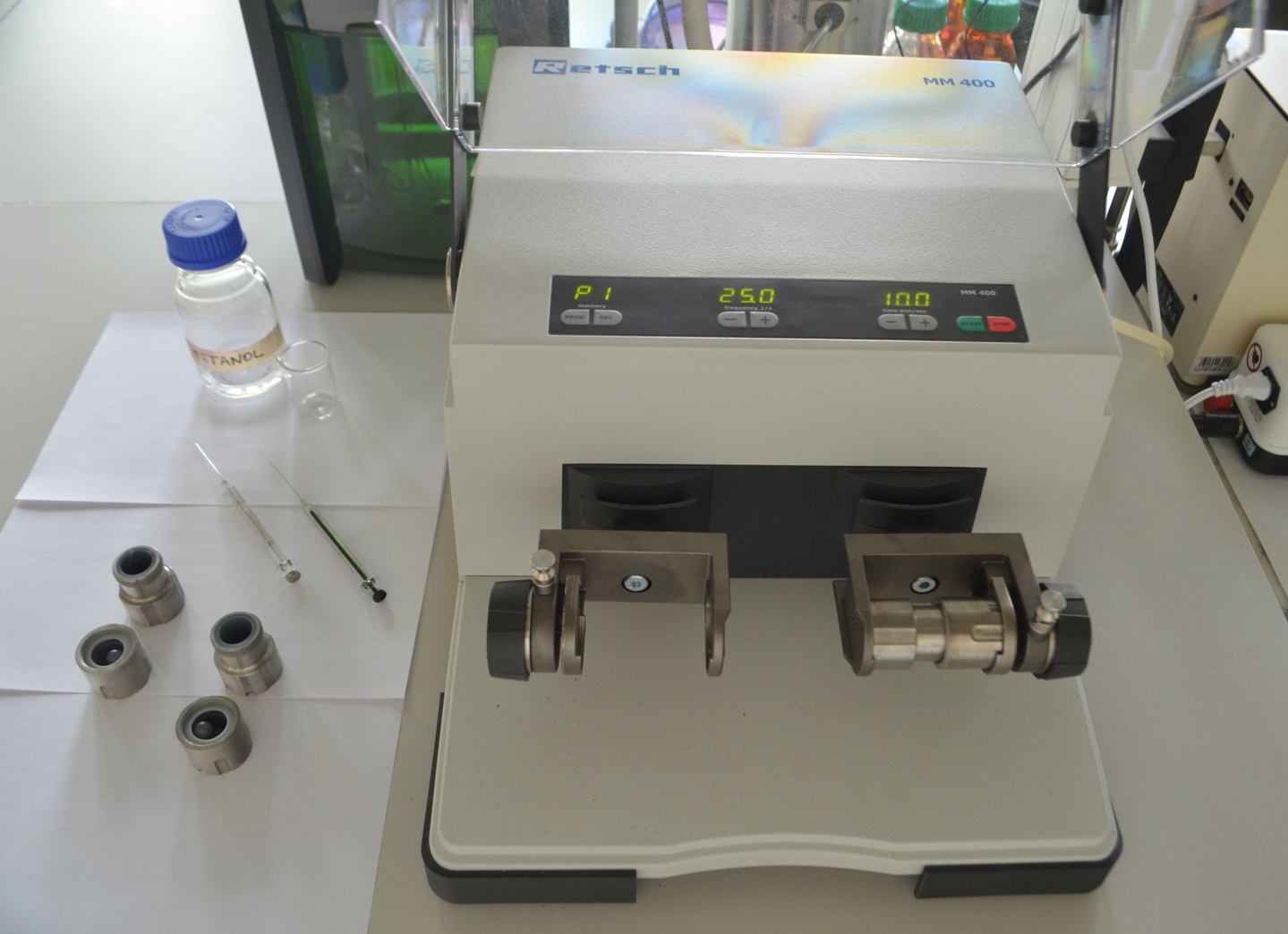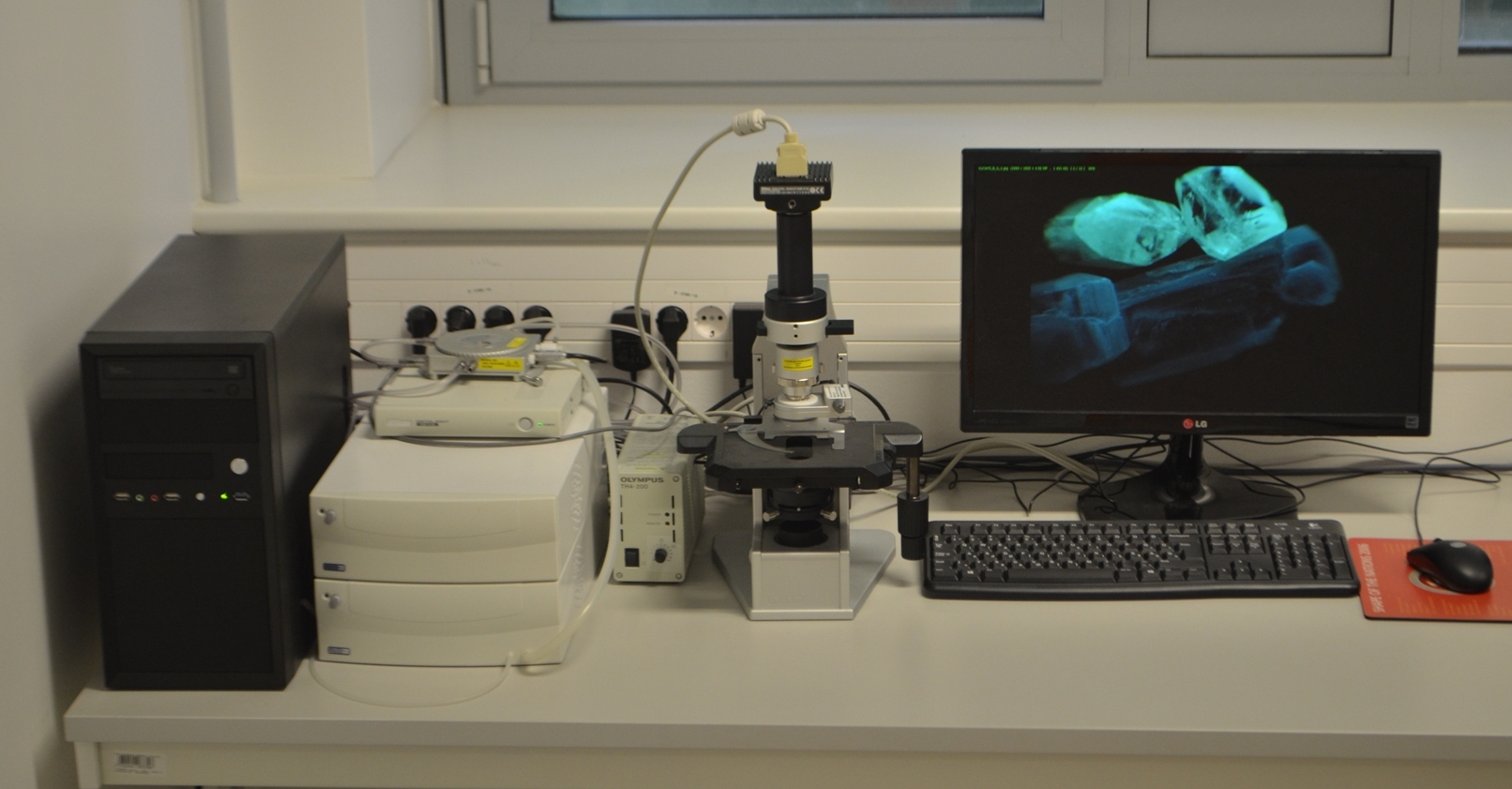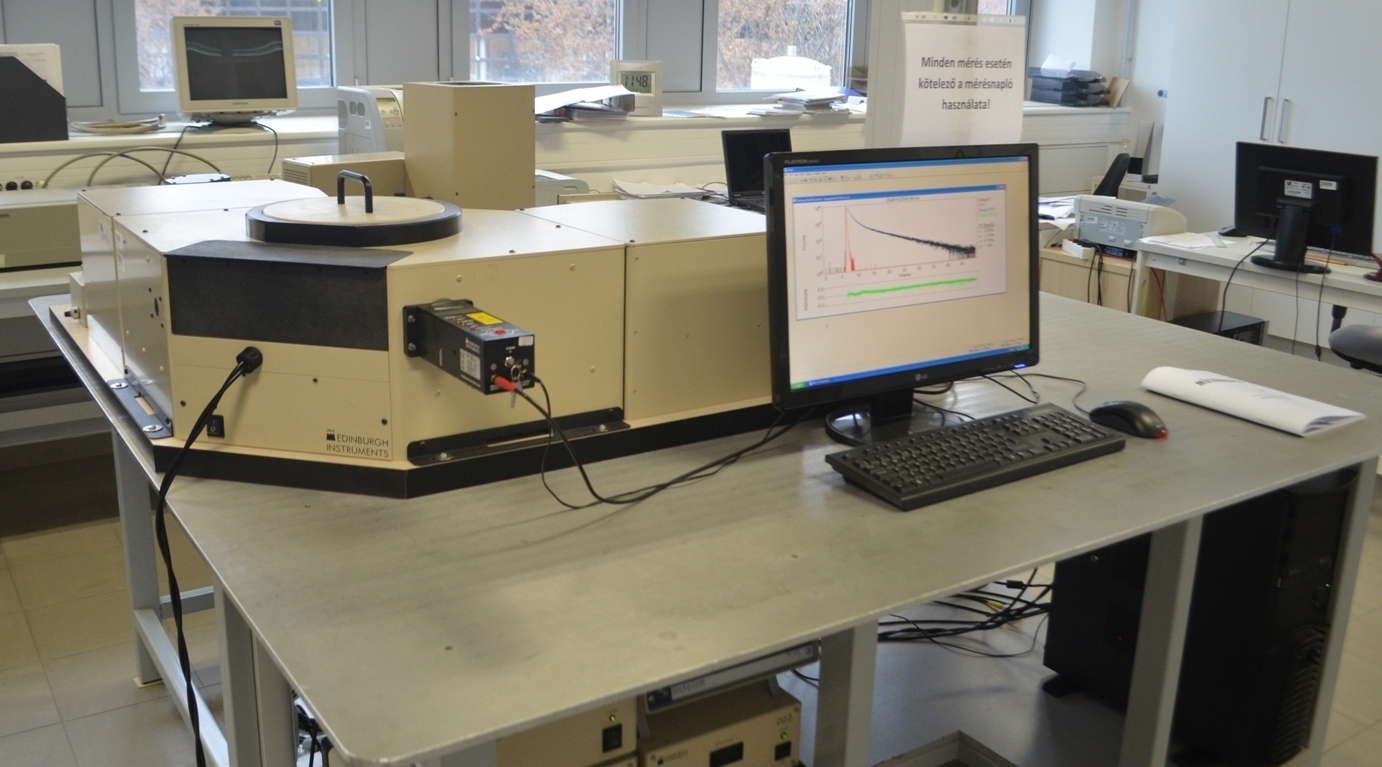Research interest
The research in our group focuses on the design, preparation and characterization of novel gold(I)-based materials with new and exciting properties.
Supramolecular chemistry—using the paradigm of self-assembly derived from molecular biology—can provide unique materials with new properties for physics, electronics, chemical technology as well as nanotechnology. Metal centres and organic ligands can be assembled into metallosupramolecular structures that exhibit a variety of useful and exciting chemical and physical properties. Our group has been developing new synthetic methods (including solid state mechanochemical synthesis) for the construction of novel metallosupramolecules. Our research activity is also concerned with the structure determination and spectroscopic characterization of these metallosupramolecules.
Starting from gold(I)-diphosphine (diphos) precursors and using the dative Au–X (X = P, N, O and S) bonds and aurophilic Au···Au interactions, we have synthesized and characterized a large number of potentially useful supramolecular gold(I) complexes with well-defined structures (figure-eight, molecular square, dumbbell-shaped coordination polymer etc.) and properties.
yolcas, négyzet, súlyzó alakú koordinációs polimer, stb.) és tulajdonságú potenciálisan hasznosítható szupramolekuláris arany(I) komplexet állítottunk elő.
Our aim is to deeply understand the unusual properties of gold(I)-based supramolecular architectures. The most recent research endeavours of the group include the design of stimuli-responsive materials that can respond to multiple external stimuli, such as heat, light, mechanical pressure or chemical triggers.
Stimuli-responsive supramolecular gold(I) complexes
Responding to a stimulus is a natural phenomenon as most biomolecules are able to change their structures and functions in response to external stimuli. Nature serves as the model for stimuli-responsive materials, but it still remains a challenge to create new materials that respond to various external physical and chemical stimuli.
We have designed, prepared and characterized novel dinuclear [Au2(diphos)2](X)2 complexes based on flexible diphosphine (diphos) ligands that respond to multiple external stimuli, such as heat, light, pressure or chemical triggers. We have discovered that the dynamic phase transformations (crystalline to amorphous) induced by external stimuli alter the solid-state photoluminescence of these gold(I)-based materials. We established the role of intramolecular aurophilic and intermolecular non-covalent interactions (hydrogen bonding, π···π, etc.) in determining the structures and luminescence properties of these diphosphine-based dinuclear gold(I) complexes. These materials show a great potential for applications in luminescent switches, optical data recording, display devices, information storage, security inks and physical/chemical sensors.

We have discovered that a white-coloured blue-emitting mononuclear Au(diphos)(X) complex under mechanical stress transformed into a yellow-coloured red-emitting dinuclear structure containing intramolecular Au···Au interaction. In this case, the stimuli-induced colour and emission colour alterations can be attributed to a reversible neutral-to-ionic (crystalline to amorphous) phase transition. These results give novel insights into the origin of mechanochromism and mechanochromic luminescence of gold(I) complexes.

We have discovered that the nonporous crystals of a [Au2(diphos)2](X)2 complex undergo thermally- and chemically-induced single-crystal-to-single-crystal transformations, which facilitate the transport of the molecular guests through the crystal lattice. We have explained the process of guest release and uptake by a new mechanism. This nonporous gold(I)-diphosphine complex is robust enough to trap guest molecules, but at the same time it is flexible enough to allow guest release without destroying its crystal lattice. This nonporous gold(I)-diphosphine can capture and release CO2 in a controlled manner. These properties are important in facilitating the understanding of the host-guest and gas-uptake properties exhibited by nonporous compounds.

Stimuli-responsive dicyanoaurate-based heterometallic Au−CN−M structures
We have applied, for the first time, mechanochemical solid-state methods to synthesize various [Au(CN)2]-based heterometallic complexes. Heterometallic supramolecules that incorporate metals having absolutely different chemical behaviour generally exhibit sophisticated 2D or 3D structures and unusual properties. We have designed, prepared and characterized dicyanoaurate-based Au−CN−M coordination polymers (M = Me3Sn, Ph3Sn, Me2Sn, Ni, Co, Cu and Zn) that show sophisticated Au···Au linked structures and exhibit intriguing ion-exchange, gas sorption, as well as stimuli-responsive optical and luminescent properties.

Selected publications
Stimuli-responsive supramolecular gold(I) complexes
Anion-, Solvent-, Temperature-, and Mechano-Responsive Photoluminescence in Gold(I) Diphosphine-Based Dimers
A. Deák, Cs. Jobbágy, G. Marsi, M. Molnár, Z. Szakács, P. Baranyai
Chem. Eur. J. 2015, 21, 11495–11508.
Mechano-induced reversible colour and luminescence switching of a gold(I)–diphosphine complex
P. Baranyai, G. Marsi, Cs. Jobbágy, A. Domján, L. Oláh, A. Deák
Dalton Trans. 2015, 44, 13455–13459.
Structural characterization of dinuclear gold(I) diphosphine complexes with anion-triggered luminescence
P. Baranyai, G. Marsi, A. Hamza, Cs. Jobbágy, A. Deák
Struct. Chem. 2015, 26, 1377–1387.
Stimuli-Responsive Dynamic Gold Complexes (Microreview)
Cs. Jobbágy, A. Deák
Eur. J. Inorg. Chem. 2014, 4434–4449.
A stimuli-responsive double-stranded digold(I) helicate
Cs. Jobbágy, M. Molnár, P. Baranyai, A. Hamza, G. Pálinkás, A. Deák
CrystEngComm 2014, 16, 3192–3202.
Mechanochemical synthesis of crystalline and amorphous digold(I) helicates exhibiting anion and phase-switchable luminescence properties
Cs. Jobbágy, M. Molnár, P. Baranyai, A. Deák
Dalton Trans. 2014, 43, 11807–11810.
Guest escape and uptake in nonporous crystals of a gold(I) macrocycle
A. Deák, T. Tunyogi, Z. Károly, Sz. Klébert, G. Pálinkás
J. Am. Chem. Soc. 2010, 132, 13627–13629.
Solvent-assisted spontaneous resolution of a 16-membered ring containing gold(I) showing short Au···Au aurophilic interaction and a figure-eight conformation
T. Tunyogi, A. Deák, G. Tárkányi, P. Király, G. Pálinkás
Inorg. Chem. 2008, 47, 2049–2055.
Self-assembly of gold(I) with diphosphine and bitopic nitrogen donor linkers in the presence of trifluoroacetate anion: formation of coordination polymer versus discrete macrocycle
A. Deák, T. Tunyogi, G. Tárkányi, P. Király, G. Pálinkás
CrystEngComm 2007, 9, 640–643.
Synthesis and solution- and solid-state characterization of gold(I) rings with short Au···Au interactions. Spontaneous resolution of a gold(I) complex
A. Deák, T. Megyes, G. Tárkányi, P. Király, L. Biczók, G. Pálinkás, P. J. Stang
J. Am. Chem. Soc. 2006, 128, 12668–12670.
Stimuli-responsive dicyanoaurate-based heterometallic Au−CN−M structures
Cyanide-bridged bimetallic multidimensional structures derived from organotin(IV) and dicyanoaurate building blocks: ion-exchange, luminescence and gas sorption properties
A. Deák, T. Tunyogi, Cs. Jobbágy, Z. Károly, P. Baranyai, G. Pálinkás
Gold Bulletin 2012, 45, 35–41.
A versatile solvent-free mechanochemical route to the synthesis of heterometallic dicyanoaurate-based coordination polymers
Cs. Jobbágy, T. Tunyogi, G. Pálinkás, A. Deák
Inorg. Chem. 2011, 50, 7301–7308.
Synthesis and structure of a cyanoaurate-based organotin polymer exhibiting unusual ion-exchange properties
A. Deák, T. Tunyogi, G. Pálinkás
J. Am. Chem. Soc. 2009, 131, 2815–2817.
Novel gold(I) diphosphine-based dimers with aurophilicity triggered multistimuli light-emitting properties
Cs. Jobbágy, P. Baranyai, G. Marsi, B. Rácz, L. Li, P. Naumov, A. Deák
- Mater. Chem. C 2016, 4, 10253–10264.
Unexpected formation of a fused double cycle trinuclear gold(I) complex supported by ortho-phenyl metallated aryl-diphosphine ligands and strong aurophilic interactions
Cs. Jobbágy, P. Baranyai, P. Szabó, T. Holczbauer, B. Rácz, L. Li, P. Naumov, A. Deák
Dalton Trans. 2016, 45, 12569–12575.
Equipment
 |
| Retsch MM400 mixer mill |
 |
| LINKAM Imaging Station fitted with a LINKAM DSC600 temperature controlled stage and a T95-Linksys |
 |
| Edinburgh Instruments FLSP920 combined steady state and time resolved fluorescence spectrometer |
Collaborations
- MTA-SZTE Supramolecular and Nanostructured Materials Research Group, University of Szeged
- Dr. Pance Naumov Group, Smart Materials for Sustainable Future, New York University Abu Dhabi (United Arab Emirates)
- Naumov Research Group, New York University Abu Dhabi (United Arab Emirates)
- Missouri State University, Department of Chemistry, Springfield (USA)
Design synthesis and structural characterization of stimuli-responsive supramolecular complexes
Leader
Andrea Deák


